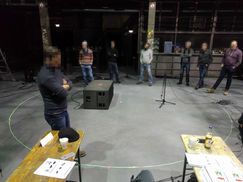 "When a loudspeaker is reproducing sound with a wavelength considerably larger than the size of its enclosure, we all know that it should be essentially omnidirectional and send out sound waves spherically."
"When a loudspeaker is reproducing sound with a wavelength considerably larger than the size of its enclosure, we all know that it should be essentially omnidirectional and send out sound waves spherically."
John Vanderkooy
(BEng, PhD – Distinguished Professor Emeritus)
And yet, when we walk around a subwoofer we can clearly hear that it's directional. So what's going on? The devil is in the details.
This is a brief summary of a practical experiment that I like to do during the Level II seminar. It's starts out by creating a polar circle on the floor typically 6 meters (18 ft) in diameter (intro image).
I will put a calibrated measurement microphone at all cardinal points (N, E, S, W) and insert a rough value for each delay locator in Smaart (typically the length of the radius in meters times 3 ms). Then I ask the participants to physically position a single subwoofer so that all 4 phase traces match to the best of their abilities.
Using the same baseline value in the delay locator for each measurement microphone implies that matched phase traces indicate matched times-of-flight and therefore distance.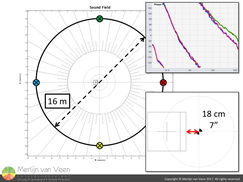 figure 1
figure 1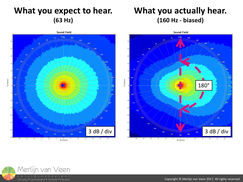 figure 2
figure 2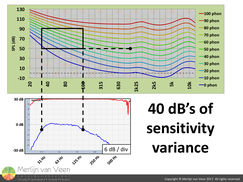 figure 3
figure 3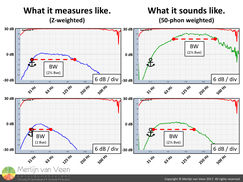 figure 4Last time we did this, a Meyer Sound USW-1P subwoofer ended up about 20 cm (8") from the center of the polar circle with respect to the grill (figure 1). Larger subwoofers can even end up 1 foot out of the center.
figure 4Last time we did this, a Meyer Sound USW-1P subwoofer ended up about 20 cm (8") from the center of the polar circle with respect to the grill (figure 1). Larger subwoofers can even end up 1 foot out of the center.
Once the subwoofer is in that particular place, I ask the participants to walk along the edge of the circle while listening to pink noise. Typically we all agree that there's audible directivity which is counterintuitive. We expect something resembling the left-hand plot in figure 2 but experience the right plot exhibiting a coverage angle of "only" 180° and not 360°.
The Equal Loudness Contours (figure 3) show us that human hearing exhibits about 40 dB (100 : 1 ratio) of variance in pressure sensitivity for the subwoofer range (32 Hz to 125 Hz). This means that we're partial to the higher subwoofer frequencies by at least 20 dB or more.
Listening to subwoofers alone without mid and high frequencies puts our perception completely out of context and we're well advised to desensitize ourselves when gauging directivity.
Using the ELC curves as weighting curves allows us to see our subwoofer in Smaart the way we hear it. For subwoofers running at 90 to 100 dB SPL (Z-weighted) I typically resort to the 50 or 60 phon curve.
Figure 4 shows that for the Meyer subwoofer we're 24 dB (16 times) more sensitive to the octave between 125 and 250 Hz which resides outside the actual operational range of this speaker.
When left uncounted for we end up listening to a completely different band where typically the main speakers are sole custodians. The perceived bandwidth differs from the measured (Z-weighted) bandwidth. Needless to say that this will completely skew our perception, including that of directivity.
It took a 2nd order Linkwitz-Riley LPF at 32 Hz to make the subwoofer sound "flat" to our ears. This filter is introduced for listening purposes only in order to unbias ourselves. Once the filter was in place, we walked the circle again and suddenly any signs of directivity were virtually gone.
With the subwoofer equitemporal ergo equidistant to all cardinal points it sounded and measured near omnidirectional. What we heard under these circumstances matched our expectations (figure 2).
Small format subwoofers tend to be down by 1 dB in the back and larger subwoofers 3 dB at most.
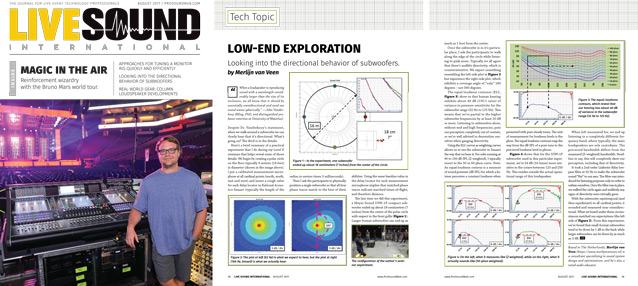 This article is also featured in the August 2017 edition of Live Sound International magazine.
This article is also featured in the August 2017 edition of Live Sound International magazine.
